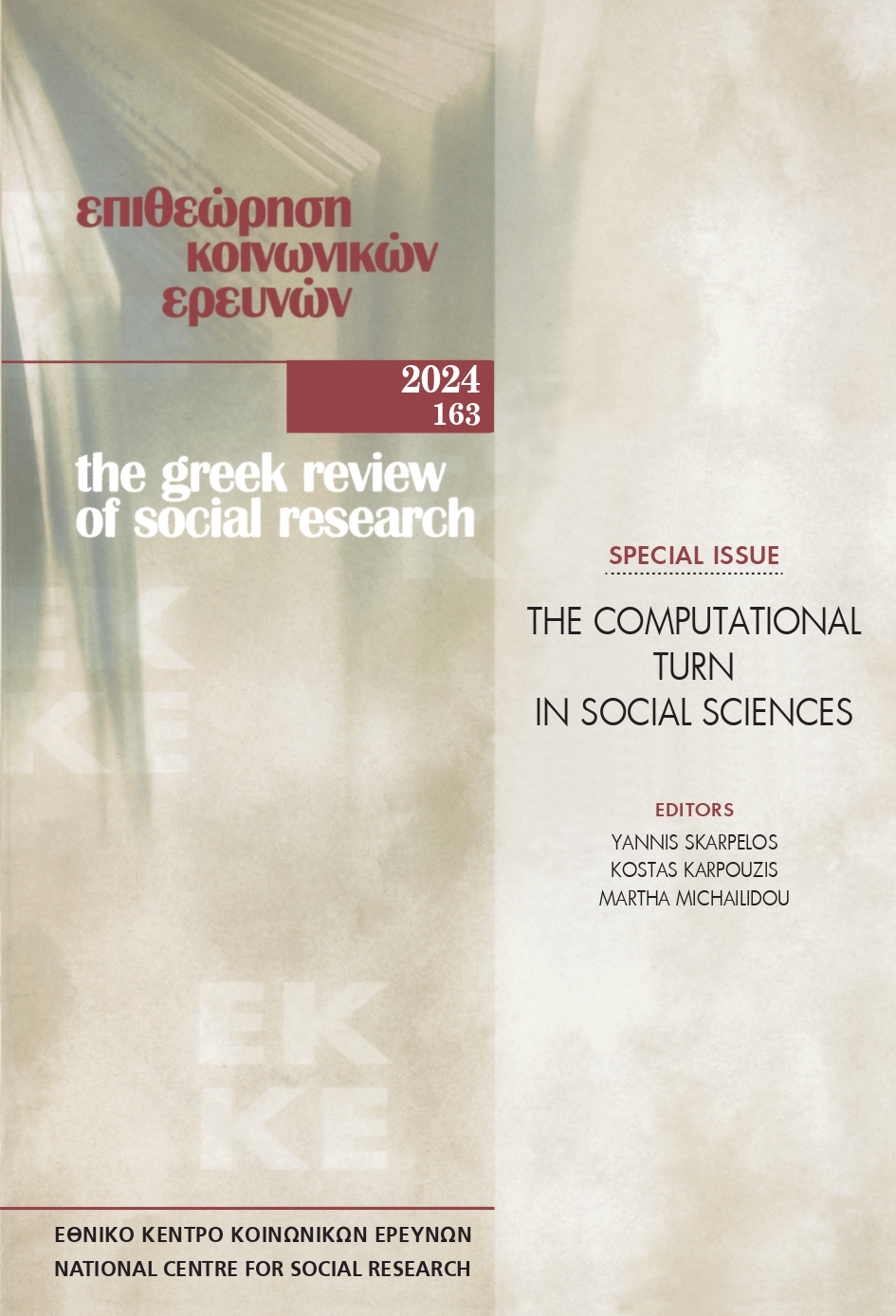Mapping a hybrid phenomenon in the digital world: The Greek professional gaming scene through Social Network Analysis (SNA)

Abstract
The consumption of video game content as a commercial spectacle, namely professional gaming, is a complex cultural, social and economic activity that seems to be growing in popularity. The application of Social Network Analysis (SNA) allowed for a graphical representation of the Greek professional gaming scene, specifying its size and the different actors operating within it, and highlighting the crucial role of the content producers themselves. It also revealed the rapid commercialisation of professional gaming and the fact that it is a highly gendered space, where different gendered identities are excluded or marginalised.
Article Details
- How to Cite
-
Dargonaki, S. (2024). Mapping a hybrid phenomenon in the digital world: The Greek professional gaming scene through Social Network Analysis (SNA). The Greek Review of Social Research, 163, 143–171. https://doi.org/10.12681/grsr.38513
- Section
- Articles

This work is licensed under a Creative Commons Attribution-NonCommercial 4.0 International License.
Authors who publish with this journal agree to the following terms:
- Authors retain copyright and grant the journal right of first publication with the work simultaneously licensed under a Creative Commons Attribution Non-Commercial License that allows others to share the work with an acknowledgement of the work's authorship and initial publication in this journal.
- Authors are able to enter into separate, additional contractual arrangements for the non-exclusive distribution of the journal's published version of the work (e.g. post it to an institutional repository or publish it in a book), with an acknowledgement of its initial publication in this journal.
- Authors are permitted and encouraged to post their work online (preferably in institutional repositories or on their website) prior to and during the submission process, as it can lead to productive exchanges, as well as earlier and greater citation of published work (See The Effect of Open Access).


